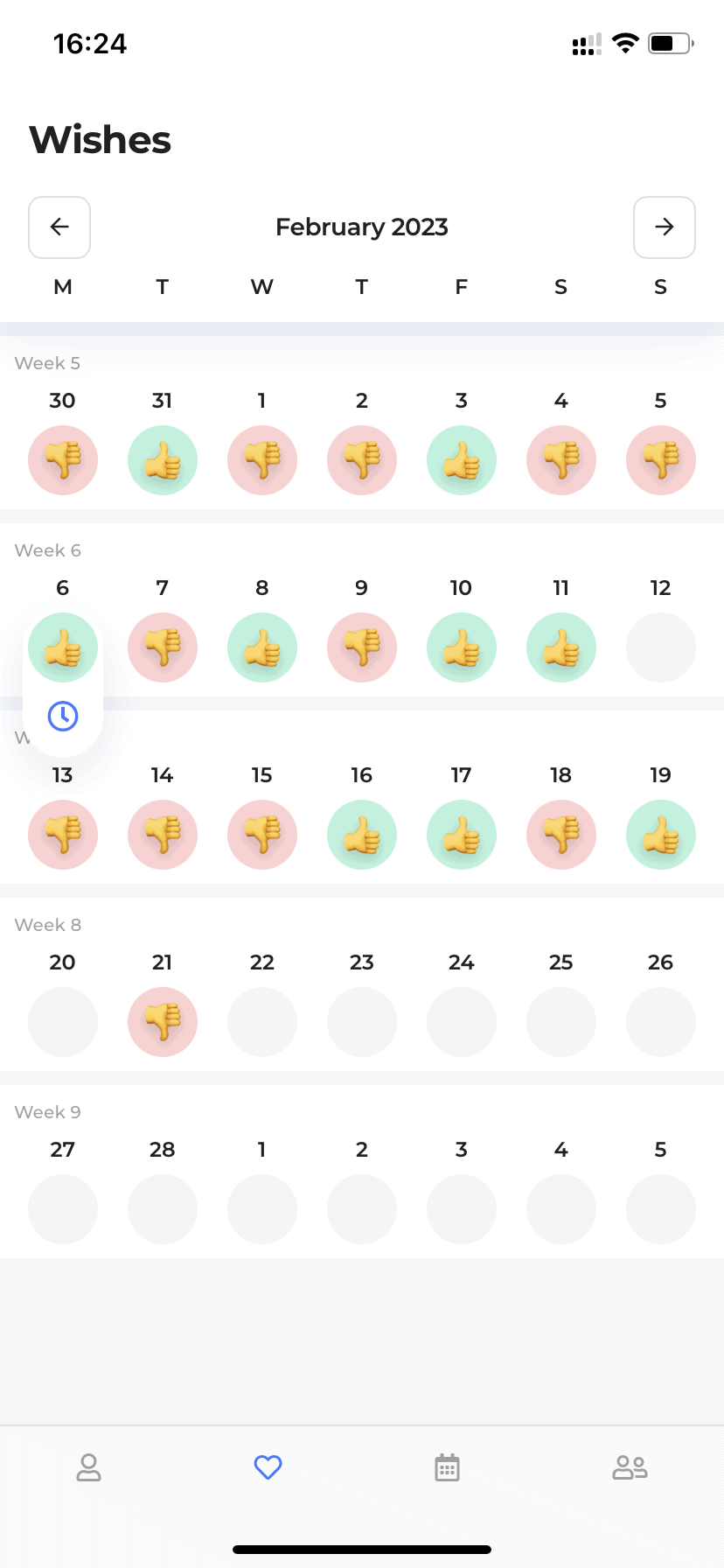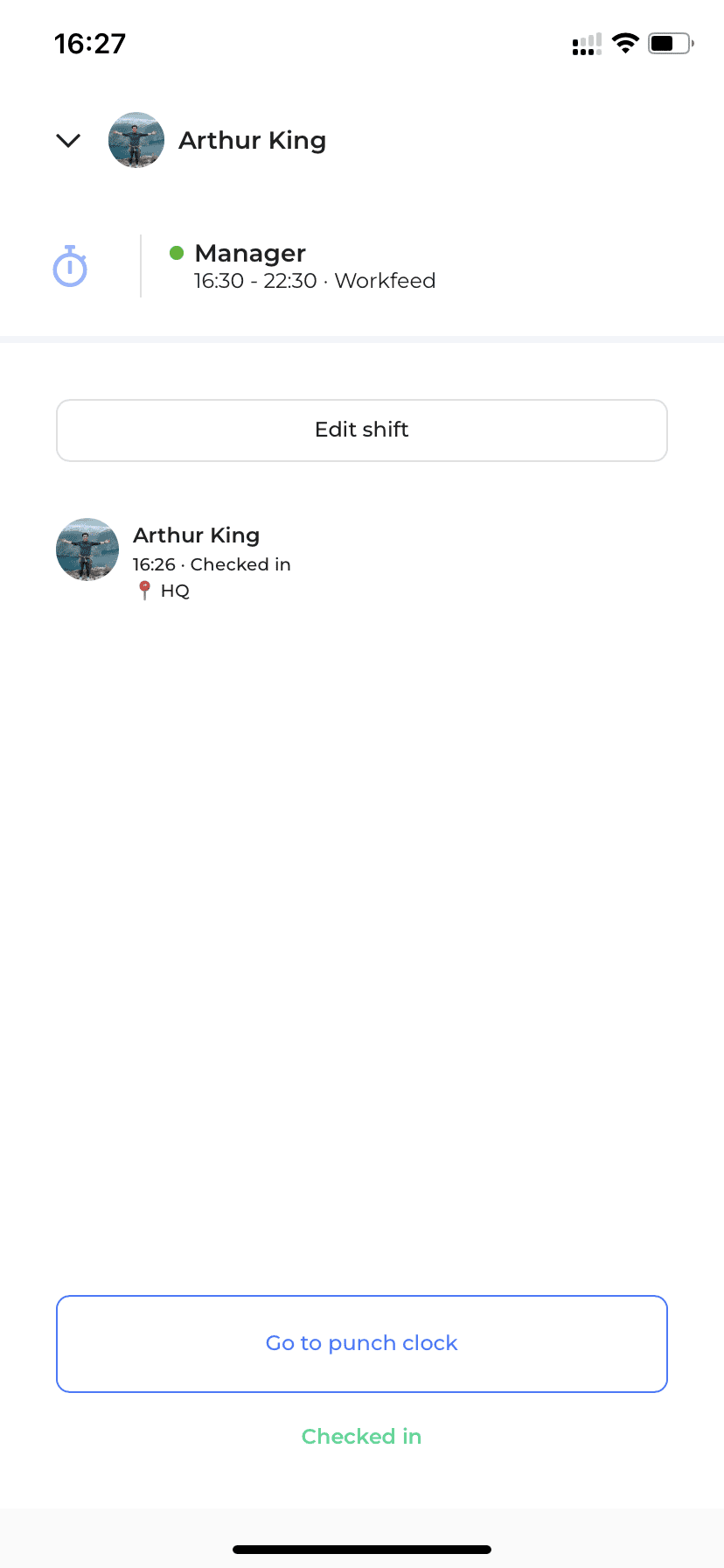
It is important to have a good understanding of what types of work schedules exist, which one(s) fit your business, and why having a well-structured and effective employee schedule is important. Creating a work schedule should not be underestimated or taken lightly, as it can significantly impact the success of your business.
A work schedule is a predetermined set of hours, days, and weeks in which a person is expected to be available to work. It outlines the specific times and dates that an employee is expected to work and includes details such as start and end times, breaks, and days off.
Work schedules can vary widely depending on the industry, type of work, and employer. Some common types of work schedules include:
Fixed schedules typically involve working the same set of hours and days each week, such as Monday through Friday from 9:00am to 5:00pm. This type of work schedule is mainly used in offices.
Rotating schedules involve working different shifts or days of the week on a regular basis, such as working mornings one week and evenings the next. This type of work schedule is mainly used in healthcare and other industries that require staffing on all or large parts of the day.
Flexible schedules allow employees to adjust their work hours or days according to their personal preferences and often goes hand-in-hand with working from home or part-time. This type of work schedule is a more modern variant that has been increasingly used in office jobs since the pandemic.
A fluctuating work schedule is a type of work schedule that varies from week to week based on the employer's business needs. It typically involves working a set number of hours per week but with varying days and times of work. This type of work schedule is mainly used in industries like hospitality.
Once you understand the different types of work schedules, it is important to choose one that best suits your company's needs. When making this decision, it is a good idea to consider factors such as your industry, your employees' preferences, and any legal or regulatory requirements.
For example, a fixed schedule may be appropriate for an office job or retail store with standard business hours and predictable demand, while a rotating schedule may be necessary for a hospital with 24/7 staffing needs. A flexible schedule may be beneficial for companies that want to boost their employees' work-life balance, while a fluctuating schedule may be ideal for seasonal businesses that need staffing based on demand, such as the hospitality industry.
It is a good idea to involve your employees in choosing the type of work schedule by gathering feedback and testing with different types of schedules. Ultimately, choosing the right type of work schedule can help your company operate more efficiently, increase employee satisfaction, and ultimately lead to greater success. In fact, the type of work schedule you choose has a big impact on how well structured and effectively you can work with it.
A well-structured work schedule ensures that there is enough available staff to meet demand and perform the tasks to be completed. Having this in place will help to make expectations for your staff clear and avoids misunderstandings. This, in turn will have a positive impact on employee satisfaction and retention, as your team is able to tailor their work to their personal lives - and not the other way around.
A common issue that loads of companies struggle with is determining the amount of staff they need. On one hand, if you do not have enough staff available to meet demand, you will encounter various problems. Not only will the workload be (too) high, which causes stress and fatigue. But productivity and therefore quality of work will suffer. This often leads to scheduling employees who are unavailable anyway, which increases the amount absences and no-shows.

On the other hand, scheduling too many employees can lead to unnecessary costs for your company. A poorly structured work schedule can also lead to employee burnout, as employees may be overworked or not have enough time off.
To create an effective work schedule, it is important to consider various aspects of your business. Consider the expected crowds on each day, peak times, and weather conditions. It is also important to keep costs and revenue side by side to ensure that your labor rate remains balanced.
One thing is certain - with a well-organized work schedule, everyone in the company wins. Employees enjoy a high level of flexibility, which has a positive impact on their morale and performance. This in turn is reflected in the company's bottom line, as customers are better served and productivity is higher, which ultimately leads to greater success. Which equals, you guessed it, a happy boss.
Before you start creating your employee schedule, it is a good idea to be sure to be well aware of all of the points mentioned above. For example, are you aware of the type of work schedule you will use, does it fit your company's needs, and are you able to ensure that your work schedule is structured effectively? If so, awesome - let's get started!
When creating the work schedule, there are a number of points to consider. These include the needs of your team, expected crowds, your costs, etc. To help you with this, we have created a step-by-step plan that you can go through when creating the work schedule.
Determine expected crowds
Draft a schedule with (unassigned) shifts based on nr. 2
Determine if you can meet your required staffing needs based on nr. 1-3
Ensure a good mix of more experienced and less experienced workers
Complete the schedule and share it with your team
Keep track of working hours and schedule changes
Ask your team to share their availability for an agreed-upon period so you have a clear record of who can work when. You can use a scheduling tool to ensure that everyone can easily access and update their availability (see the image below).

Map out expected (daily) crowds to ensure that you do not under or over-schedule staff. Consider factors such as seasonality, special events and other factors that may affect demand.
Based on the gathered information, you can create a work schedule for a period of your choice. Define the required number of staff per day and time period and process it in the work schedule. We recommend including roles in the work schedule (chef, front of house, bar) considering not everyone can perform the same tasks.
Note: Keep in mind that local laws and regulations may require the work schedule to be available a certain number of weeks in advance.
Now that you have both the availability of your team and the outline for the work schedule, you can determine whether all the shifts can be assigned to your staff without any issues.
In case you're not able to cover all shifts, there can be different reasons for this. It can always happen, that by chance, a lot of people request the same day off - this is something you can simply not avoid. But if you are structurally unable to cover all shifts, you may be short of staff.
If this is the case, you still have to come up with a solution to cover all your shifts. You can discuss with your team whether there is really no one who can pick up a particular shift or you can possibly hire a temp.
Tip: Instead of manually checking whether you have enough staff available to meet required staffing levels, you can do this automatically with Workfeed.
Before you finish the schedule, make sure to double check if it has a good mix of more experienced and less experienced workers on any given day and time. This will help you balance the workload and ensure that the team is always learning and improving.
Once you've completed the schedule, share it with your team. Make sure to have a good way to distribute it so everyone can easily see the latest version of the schedule at any given time.
When the work schedule has started, the work does not stop. Firstly, the working hours of your staff will have to be recorded - preferably error free. The easiest way to do this is by using a time tracking tool like Workfeed to do it for you.
Not only does it automate timesheets, but it also allows your team to see their own hours and expected salary. Moreover, it allows you to give your team the flexibility and freedom to swap shifts as well. Making sure you have a happy team, as little administrative work as possible, and a work schedule which is always up to date.

There are different methods you can use to create work schedules. And the question you should ask yourself is - do I want to work more manually and offline, or would I like to automate lots of tasks and be able to access everything digitally?
Pen and paper and Excel are fairly simple and low-cost solutions for employee scheduling. Both options are easy to get started with and don't requite too much knowledge. However, both methods are also super limiting, time-consuming and prone to errors.
Unlike Paper and Excel, employee scheduling software/apps seems to be a relatively expensive option. However, it allows you to work a lot more efficient - saving you not only time, but also a lot of money. Not only can it automate a lot of tasks, it also reduces the amount of errors.
